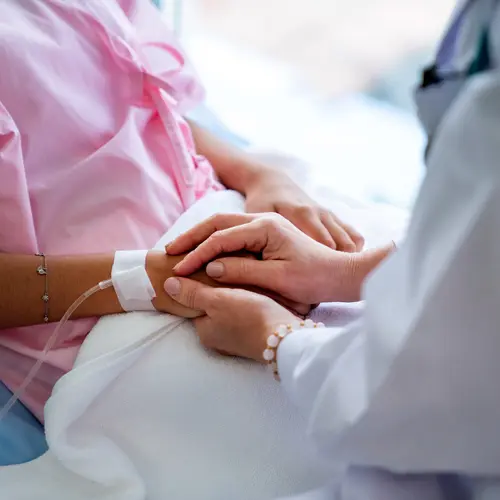When you think of cancer treatments, chemotherapy and radiation probably come to mind. That may change soon.
A lot has happened in recent years to transform how the disease is, and will be, treated. As a result, folks with cancer and their doctors have more options to pick from, with more on the way.
Immunotherapy
One thing that makes cancer tough to fight is that its cells can dodge your immune system. Your body either doesn’t see them as threats, or it simply can’t work hard enough to fight them.
But some new immunotherapy drugs “mark” these cells so that they’re easier to find. These medicines can also make your body's defenses stronger so they can attack tumors.
This type of treatment is already fighting some forms of cancer. Many more drugs are in the works.
The FDA has approved a form of gene therapy called CAR T-cell therapy. It uses some of your own immune cells, called T cells, to treat your cancer. Doctors take the cells out of your blood and change them by adding new genes so they can better find and kill cancer cells.
Right now, the drug, called tisagenlecleucel (Kymriah) is approved for treatment of children and young adults up to age 25 with B-cell acute lymphoblastic leukemia who haven’t gotten better with other treatments. But scientists are working on a version of CAR T-cell therapy for adults and for other kinds of cancer.
Tisagenleleucel and axicabtagene (Yescarta) are both approved for treatment of certain types of B-cell lymphoma in adults that has not improved with other treatments.
The FDA recently approved a new treatment called brexucabtagene autoleucel (Tecartus) for patients with mantle cell lymphoma that has not improved with other treatments or has come back after treatments.
Personalized Medicine
It used to be that most people with a certain type and stage of cancer got the same treatment. Now, doctors know that a solution that helps one person may not work well for someone else.
Your genes can now give doctors a better idea of which treatments will help you the most.
Some drugs are more targeted, too. Instead of wiping out all cells, even healthy ones, some can focus just on deadly cancer cells.
This would let immune cells and medicines get inside tumors and fight back.
High-Tech Breakthroughs
Advances in imaging may make it easier for doctors to learn about the cancer they’re up against. Studies are ongoing to learn more about these imaging techniques and to learn about the cancer they’re up against.
Multiparametric-magnetic resonance imaging (mp-MRI), for instance, can uncover the jumble of blood vessels in a new prostate tumor. That close-up view can help doctors decide the best treatment.
Fluorescence lifetime imaging (FLI) is used to help women with breast cancer. A scan tells your doctor if you have proteins that are helping your cancer cells grow. If you do, they can prescribe treatment that may block the growth.
Thanks to better imaging, other high-tech tools can kill tumors. For instance, doctors can use a technique called cryoablation (freezing) to treat them. This means they might not have to remove all or part of a lung.
In MRI-guided focal laser ablation, high heat from a laser targets cancer cells in your prostate. If doctors can see cancer in an imaging scan, they can get to it and destroy it.
Drug-Free Treatments
Drug-free therapies like yoga, massage, meditation, and hypnosis can help you live better during your cancer treatment. Some relieve stress and help your mood. Others may make the side effects caused by chemotherapy or radiation a bit easier to take.
Acupuncture, an ancient Chinese practice that uses thin needles placed under your skin, can relieve symptoms like:
- Night sweats
- Nausea
- Fatigue
- Hot flashes
- Depression
- Pain
Lifestyle Changes
You know you should cut down on fatty foods, be more active, and limit the alcohol you drink. These everyday tips are also good ways you can stave off cancer.
Working out can drop your risk of 13 different cancers. You don’t need to run marathons to reap the benefits, either. Walking just 30 minutes each day during your lunch break will help.
In life, having options is good. The increasing number of options for people with cancer is great, and becoming greater.

